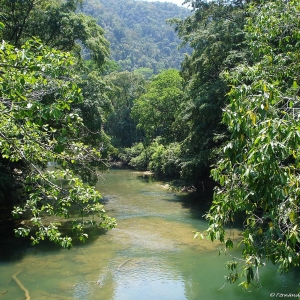Federal Water Tap, February 18: EPA Plans to Regulate Two PFAS Chemicals in Drinking Water
The Rundown
Drinking water standards for two PFAS chemicals are coming, but not quickly. In a study of 25 drinking water treatment facilities, federal scientists find a high occurrence of PFAS chemicals. The Senate passes a big land and conservation package. A slew of water bills are introduced in Congress, including lead in schools, water recycling, and harmful algal blooms in Florida. The budget deal preserves water infrastructure funding. The EPA updates its policy on water quality markets. And lastly, the public comment period for proposed changes to the scope of the Clean Water Act is open.
“I have every intention of setting an MCL.” — Andrew Wheeler, the acting EPA administrator, using the technical abbreviation for a drinking water standard. Wheeler said that the EPA will start the process for setting a MCL for PFOA and PFOS. The agency currently has in place a 70 parts-per-trillion health advisory for the two PFAS chemicals, but a health advisory is not enforceable.
By the Numbers
$2.9 billion: Money directed to the Clean Water State Revolving Fund ($1.7 billion) and the Drinking Water State Revolving Fund ($1.2 billion) in the 2019 budget deal approved by Congress. Those are the main low-interest loan funds for water infrastructure. Both were funded at the same level as in 2018. (House Appropriations Committee)
News Briefs
EPA Unveils PFAS Plan
The U.S. Environmental Protection Agency will set federal drinking water standards for PFOA and PFOS, two manmade chemicals in a class of toxic compounds that have been found in the water supplies of millions of Americans.
Don’t expect the standards to come quickly, though.
In a rollout on February 14 of its plan for addressing nationwide PFAS contamination, Andrew Wheeler, the acting EPA administrator, said that the agency will complete the first step in the regulatory process by the end of the year. That first step is an official determination of whether to regulate the chemicals, which Wheeler said the agency would do.
Proposing a standard will come later.
Other actions mentioned in the plan include:
- Listing PFOA and PFOS as hazardous substances under the federal Superfund law. Doing so will give the agency the authority to order cleanups at contaminated sites and force polluters to cover the cost.
- Publishing groundwater cleanup standards for PFOA and PFOS. These standards are currently in interagency review, according to David Ross, head of the EPA Office of Water.
- Monitoring for additional PFAS chemicals in the next round of national drinking water monitoring, which will begin after 2020.
Assessing the toxicity of five additional PFASs by 2020. - Developing new analytical tools for detecting the chemicals in water.
- Considering whether to require companies to disclose in mandatory reports the amount of PFASs that they discharge to water, air, or land. Currently no such chemicals are on the annual Toxics Release Inventory.
For more details, see Circle of Blue’s coverage.
Lands Bill Passes Senate
By a wide margin — 92 to 8 — the Senate passed a huge land and conservation package.
The Natural Resources Management Act is packed with provisions that affect water. In particular, it reauthorizes the Land and Water Conservation Fund, which uses oil and gas royalties for parks, trails, and habitat restoration.
The bill authorizes the third phase of a water supply and conservation plan in the Yakima River basin of Washington state. The authorization includes a provision allowing irrigation districts to construct a pumping station in Kachess Reservoir, which would help them to tap the reservoir when water levels drop below the dam outlets. The plan is opposed by a group of property owners along the reservoir, who worry about the effect on lake levels. A pipeline to link two reservoirs in the basin’s headwaters is also part of the plan.
The bill also withdraws 340,000 acres in the Methow Valley of Washington state from mining and geothermal leasing. The land is in the Okanogan-Wenatchee National Forest, along the headwaters of the Methow River.
Water Bills in Congress
Six weeks into the session, and water bills are accumulating in Congress, many of them recycled from previous sessions. Notably:
- Rep. Brenda Lawrence (D-MI) reintroduced the Get the Lead Out of Schools Act, which establishes testing requirements and lead limits for school drinking water. The local water utility would be responsible for testing. The bill also orders a grant program to help fund water testing and lead pipe replacement. The bill did not make it out of committee last session.
- Rep. Brian Mast (R-FL) reintroduced the South Florida Clean Coastal Waters Act, which requires an interagency task force to assess the causes of harmful algal blooms in the region and submit a plan to Congress for reducing and controlling them. Sen. Marco Rubio (R-FL) introduced a companion bill in the Senate. Neither bill made it out of committee last session of Congress.
- Rep. Grace Napolitano (D-CA) reintroduced a bill to increase federal grants for water recycling to $500 million. The bill did not move out of committee last session.
- Rep. Ken Buck (R-CO) reintroduced the Water and Agriculture Tax Reform Act, which allows ditch companies to sell water to cities, energy companies, and other outside parties while still maintaining nonprofit status, so long as the proceeds of the sales pay for maintenance and repair of irrigation infrastructure. The House approved the bill last session.
Green New Deal Vote Pending
Sen. Mitch McConnell (R-KY), the Senate majority leader, said he would bring the Green New Deal resolution up for a vote. Doing so would force senators to take a position on a controversial resolution that aims to transform America’s energy system as well as rectify economic inequality.
Studies and Reports
Study Finds High PFAS Occurrence in Drinking Water
A joint study from the EPA and U.S. Geological Survey found PFAS chemicals in the treated and raw water of all 25 drinking water treatment plants that were sampled.
Though detection was high, concentrations were lower than the EPA’s health advisory of 70 parts per trillion for PFOA and PFOS combined. Water samples from only one treatment plant exceeded the health advisory. (Some states, however, have set their own standards that are substantially lower than the EPA health advisory.)
Researchers tested the water samples for 17 PFAS compounds. The median PFAS concentration for all compounds combined was 21.4 parts per trillion in raw water and 19.5 parts per trillion in treated water. The median concentrations of individual compounds were all below 10 parts per trillion.
The detection thresholds in this study were substantially lower than those used by the EPA in 2013-15, when six PFAS compounds were part of a national testing program for drinking water utilities. In that study, the six compounds were detected in no more than 2.4 percent of samples. The thresholds in that study were high enough that PFAS contamination at lower levels was not reported.
Water Quality Trading
In a memo to regional administrators, David Ross, the head of the EPA Office of Water, outlined ways to encourage wider use of nutrient markets to reduce water pollution.
Ross conceded that agency efforts to date to promote markets, which were explained in a 2003 policy, have been too heavy-handed. The current guidance “may be too prescriptive to be widely effective and implementable,” Ross wrote.
The memo lists six principles that states, tribes, and local groups should take into account when designing a market.
Water quality markets, in a common form, are a sort of cap-and-trade for water pollution. Groups that can reduce nutrient flows more cheaply sell credits to those whose pollution-reduction efforts would cost more.
On the Radar
WOTUS Comment Period Opens
The Trump administration’s proposal to reduce the scope of the Clean Water Act was published in the Federal Register, meaning the public comment period is open.
Submit comments through April 15 via www.regulations.gov using docket number EPA-HQ-OW-2018-0149.
Federal Water Tap is a weekly digest spotting trends in U.S. government water policy. To get more water news, follow Circle of Blue on Twitter and sign up for our newsletter.
Brett writes about agriculture, energy, infrastructure, and the politics and economics of water in the United States. He also writes the Federal Water Tap, Circle of Blue’s weekly digest of U.S. government water news. He is the winner of two Society of Environmental Journalists reporting awards, one of the top honors in American environmental journalism: first place for explanatory reporting for a series on septic system pollution in the United States(2016) and third place for beat reporting in a small market (2014). He received the Sierra Club’s Distinguished Service Award in 2018. Brett lives in Seattle, where he hikes the mountains and bakes pies. Contact Brett Walton






Leave a Reply
Want to join the discussion?Feel free to contribute!